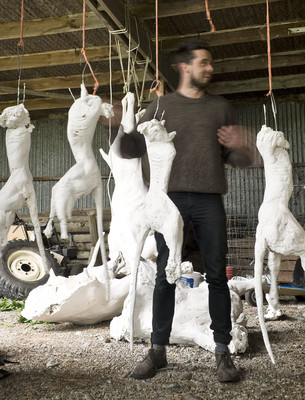B.
Inside the phantom abbatoir
Behind the scenes
If I had to recommend one book to a course in curatorial studies it would be Victoria Newhouse's amazing study Art and the Power of Placement.

Victoria Newhouse, Art and the Power of Placement, Monacelli Press
It's about the way works of art are changed by how and where we show them. If, like most New Zealanders, you're used to seeing the world's most famous paintings cropped and floated on white pages, the joy of Newhouse's book lies in the many photos of the weird and wildly varied ways in which, say, Jackson Pollock's paintings have been displayed over the years: squeezed into little galleries, marooned in big ones, keeping company with pot-plants in New York intellectuals' apartments, and even hung, in one wacko instance, on a ceiling.
Felicity and I have been doing studio visits in preparation for a show called Rolling Maul: New Art from Here, and one artist in particular, Sam Harrison, provided us with a memorable lesson in the 'power of placement'. Our first encounter with Sam's work was in a small studio space on Victoria Street (he had to move due to the quake), where he doesn't need to do much more than turn around to reach any one of his sculptures in progress. It's tight.

Photo: John Collie

Photo: John Collie
We're looking forward to seeing them in a gallery, but for now it's hard to shake the feeling that we've encountered them in their ideal setting.
A week or so later we found ourselves in an open-fronted barn in farmland about ten minutes west of Christchurch, where Sam's new sculptures of wallaby and horse carcasses were hanging by bent wire from the rafters. Swaying in the shadows of the barn, they looked at once visceral and ghostly – like relics from a phantom abbatoir.
